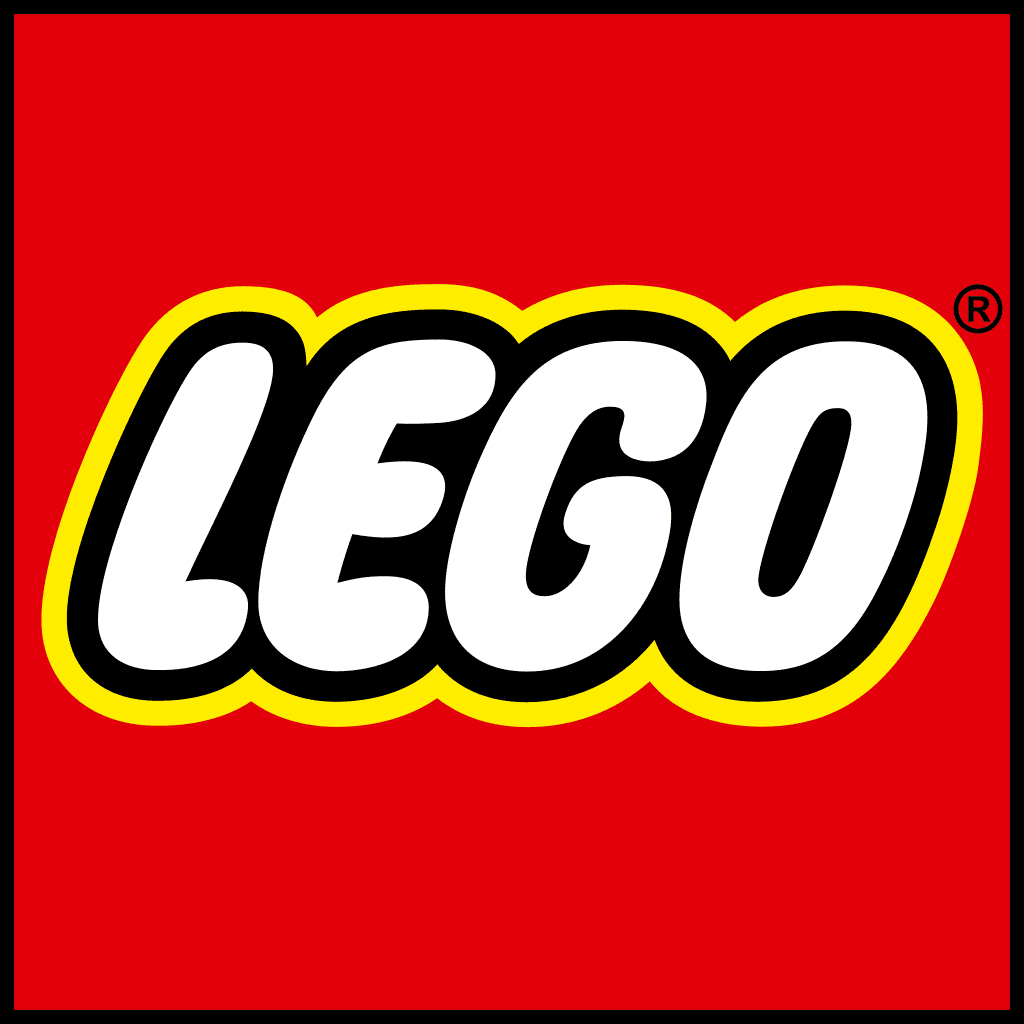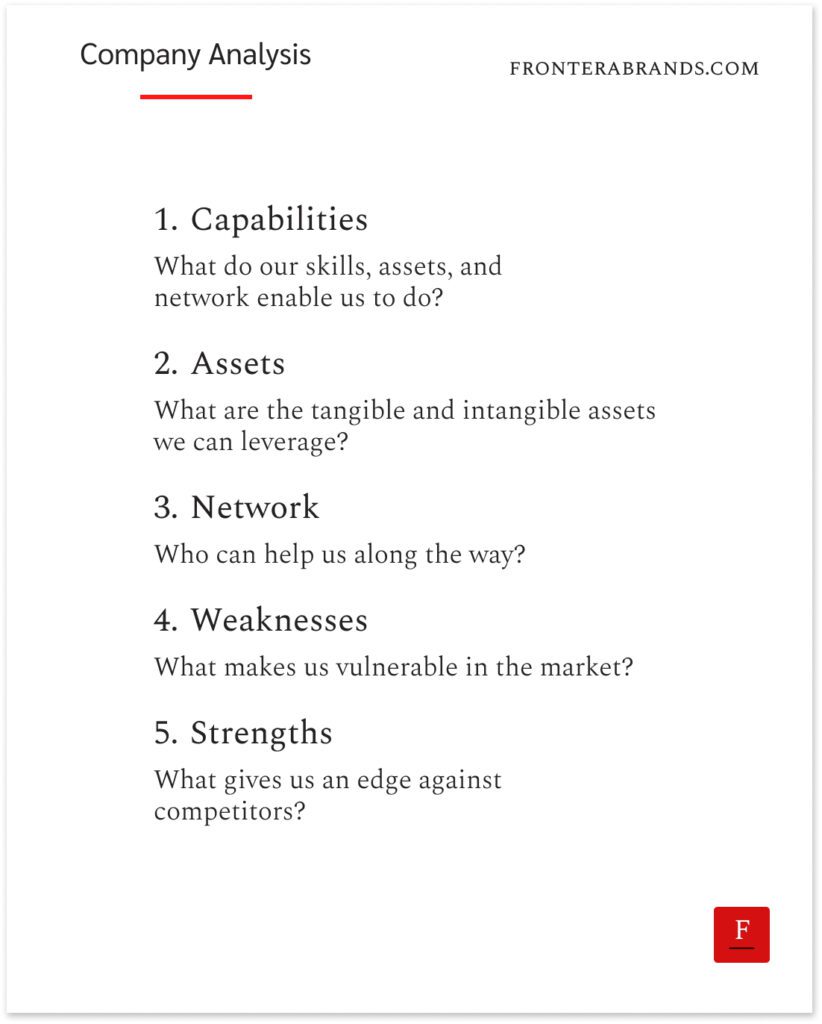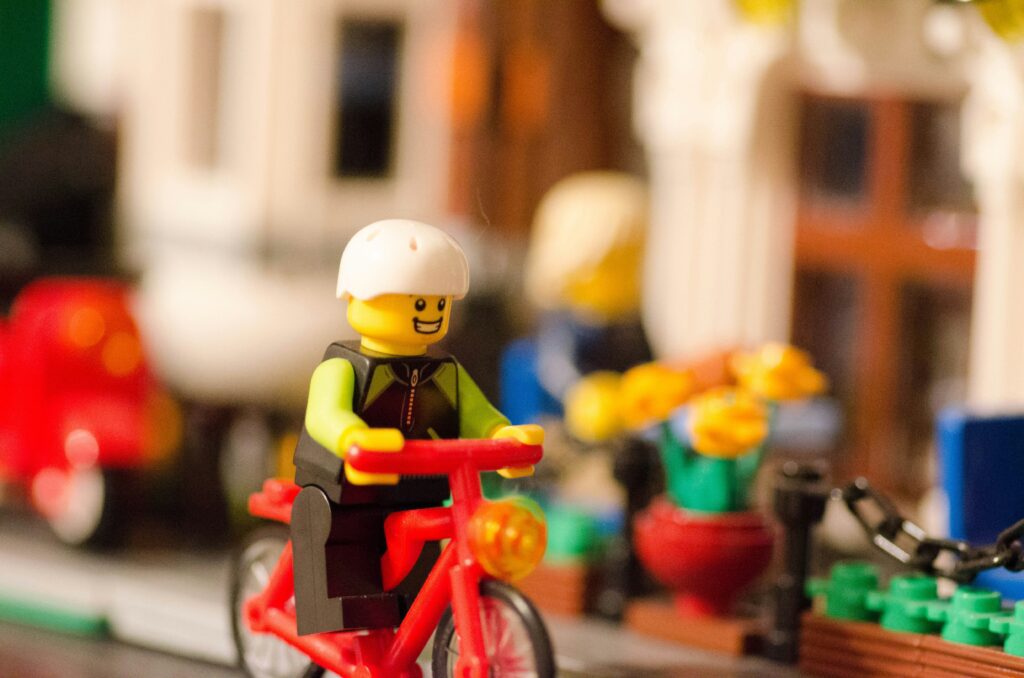In our Profit-Led Branding Framework, three elements drive a brand’s new positioning: Company, Customer, and Competition.
Only the right insights from these 3C’s can make the new positioning obvious.
In this article, we’ll dive into the first C: Company analysis. The others will follow in the upcoming weeks.
–
In 2003, the iconic toy brand LEGO was in trouble.
They had a negative cash flow of $160 million.
Plus they had almost $800 million debt.
So the company came to the brink of bankruptcy.
The management didn’t know how to get out of the situation.
It was a perfect storm.
First, their sales were dropping fast.
LEGO was losing its edge in making hit toys.
They had some recent success with licensed merchandise — like Star Wars and Harry Potter sets.
But when there was no new movie, even those sets didn’t sell.
So retailers tried to empty their LEGO inventory with heavy discounts.
The LEGO team was also releasing too many new products, with new LEGO bricks instead of standard ones.
And that spiked manufacturing costs.
In the meantime, competitors like Mega Bloks have flooded the market with cheaper alternatives since LEGO’s brick patents expired in the 1980s.

Plus, there was the digital trend.
Kids played more and more on PlayStation, Xbox, and computers.
Management consultants had advised LEGO executives that the brick toys were dead.
The company had to diversify its revenue with new business lines and jump onto the digital train.
So LEGO entered the digital space with video games.
But they had no expertise.
And technology was still young.
Hence their games didn’t make any money.
They also expanded into other areas hoping to create a business line that could save the rest of the company.
Theme parks, clothing, education…
But none of them made any profits.
So the company that made “The toy of the 20th century” was struggling in the new century.
LEGO’s owner Christiansen family realized they’d have made more money in the previous ten years if they had just sold the company and invested in U.S. bonds with guaranteed returns.
LEGO burnt half a million dollars per day, every day, for ten years.¹
But for the Christiansen family, LEGO meant more than money.
There were 70+ years of legacy.
And many kids and adults still loved the brand.
So they wanted to save LEGO.
What do you do when nothing is working?
As a last resort, the board fired CEO Poul Plougmann who was brought in to turn around the company.
And they appointed the recently hired Head of Strategic Development Jørgen Vig Knudstorp (who was 35 years old) to save LEGO.
Now put yourself in the shoes of Knudstorp.
Everything is going wrong.
And all the common tactics to turn around a company have failed.
Where do you even start?
How do you save this dying giant?
Well, Knudstorp did something smart.
He didn’t jump to a solution with a new grand vision as any new CEO would do.
Despite the pressure from the board and the employees about a new direction, he first wanted to make the right analysis of the situation.
How did the company end up like this?
What could he still use to save the company?
So he talked to employees, customers, and retail partners.
He tried to map out what LEGO still had as a company and what it meant to customers.
What did he find?
Let’s categorize his findings under the five categories we use in our Profit-Led Branding Framework:

5 Factors of Company Analysis
1. Capabilities
Capabilities come from skills and expertise within the company. Knowing them helps you stay within your circle of competence.
LEGO had:
- Molding and manufacturing expertise that allows the company to produce massive amounts of toys.
- Capability to create innovative products with the internal design team.
- Capability to reach customers all around the world through established sales channels.
2. Assets
Every business has certain tangible and intangible assets. Sometimes employees take them for granted and overlook their importance.
LEGO had two prominent assets:
- The iconic LEGO brand with its bricks and minifigures.
- The LEGO System that allowed customers to create new things with the same bricks and make the new sets compatible with previous ones.
3. Network
Every company has certain connections, partnerships, or communities. Both online and offline. These relationships give the business an advantage in the market.
LEGO had:
- Access to retailers across the globe.
- Millions of customers across all age groups.
- The online networks of die-hard adult LEGO fans.
4. Weaknesses
Every business has weaknesses, even the biggest ones.
Knowing them helps you fix what you can and navigate around what you can’t fix.
For LEGO, the main weaknesses were:
- A wide range of unprofitable business and product lines.
- Overdependence on licensed and seasonal merchandise like Star Wars or Harry Potter sets.
- Complacent employees with no clear direction.
5. Strengths
Strengths come from the sum of the capabilities, assets, and networks of a company.
LEGO’s key strengths were:
- Brand recognition.
- Despite irrelevant products in recent years, still a strong brand association with playful creativity.
- Toy manufacturing expertise and global distribution network.
Only the right insights give you the right strategy
The analysis took months.
But Knudstorp gained what he needed the most to find direction: clarity.
The company was trying to do too much, in areas where it didn’t have any expertise.
Video games, theme parks, clothing…
That killed the focus of the employees and diluted the brand.
The previous CEO believed LEGO was more than bricks.
LEGO was an “idea” that could be transferred to any business model or product.
And that was slowly killing what LEGO stood for.
Employees were also disconnected from customers.
The design team was talented.
But they designed for the sake of design.
Nobody paid attention to the profitability of the products.
They forgot about the importance of the LEGO System.
So they kept creating products with new pieces that didn’t work with the other LEGO sets.
That increased production costs.
And it also caused customers to only buy licensed LEGO products like Harry Potter when there was a new movie.
LEGO’s recent products were not about playful creativity through its iconic bricks anymore.
It has become just another toy and entertainment company.

So Knudstorp decided to take LEGO back to its core: the brick toys that fueled creativity.
First, he sold (or closed) business lines like theme parks, video games, and clothing.
He cut out 30% of the product portfolio.
And he revived the LEGO System — one of the assets that the company had ignored for a while.
Why?
Because the LEGO System was something that everybody loved.
The production team loved it because it reduced costs with standard bricks and colors.
Kids loved it because every new set could be used together with their previous sets.
And retailers loved it because it made kids buy LEGO again and again.
While doing all this, Knudstorp also decided to take advantage of a network they had but never used before: die-hard LEGO fans.
He led initiatives to improve products and co-create new ones with customers.
All in all, he removed LEGO’s weaknesses.
And leveraged its strengths.
That meant the previous CEO’s idea was wrong.
LEGO was not going to aim masses to be “the world’s strongest brand among families with children” anymore.
LEGO was a premium and niche toy brand for creativity.
It made things clear for employees, retailers, and customers.
The result?
Ironically, doing less grew the company larger.
Thanks to focusing on its core, LEGO started making hit (and profitable) toys again.
Tapping into their fan network helped LEGO designers build legendary sets like LEGO City and LEGO Architecture.
So LEGO didn’t only survive — it became even more iconic.
Only in two years, the company went from making record losses to a $117 million pretax profit.
From there on, the company kept increasing sales while increasing its profit margins.
And LEGO is the largest toy company by revenue ($9.8 billion) today.
The moral of the story?
When a business gets stuck, you can’t find the right way forward without truly understanding your company.
The answers lie within.
Yes, sometimes it requires fresh eyes to find them.
Because when you are too much into it, you can’t see things clearly.
It’s like a therapist needing another therapist for his/her own mental health.
But you have to find the core to build on.
Only that makes the right path forward obvious.
Only that gives you the insights for the new positioning.
So when your business gets stuck, look at the past first to design the future.
–
Enjoyed this article?
Then you’ll love the How Brands Win Newsletter.
Get the “5 Mental Models to Differentiate Your Business” guide when you join. It’s free.
References
The stories and data are taken from the book:
Brick by Brick: How LEGO Rewrote the Rules of Innovation and Conquered the Global Toy Industry
